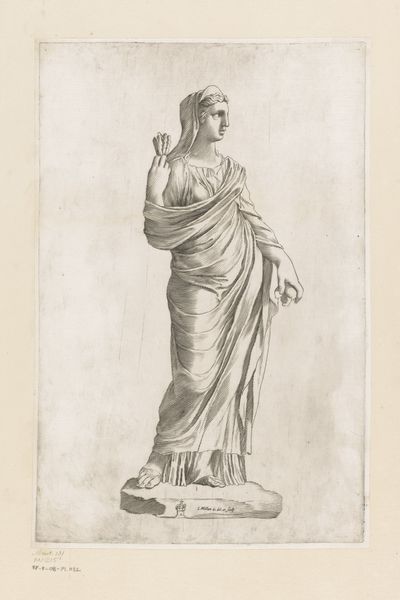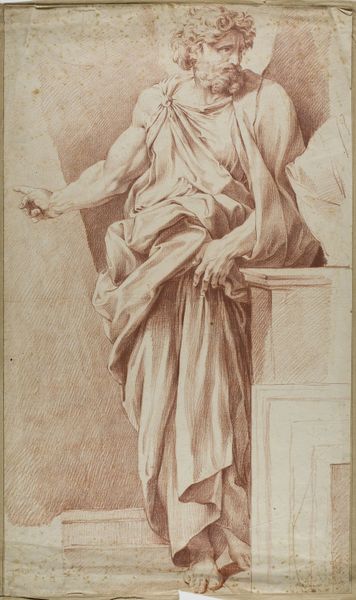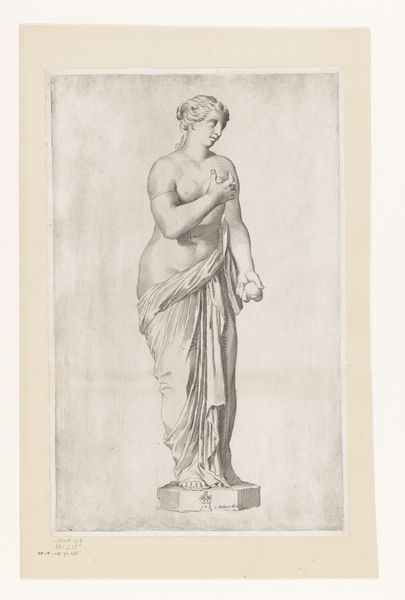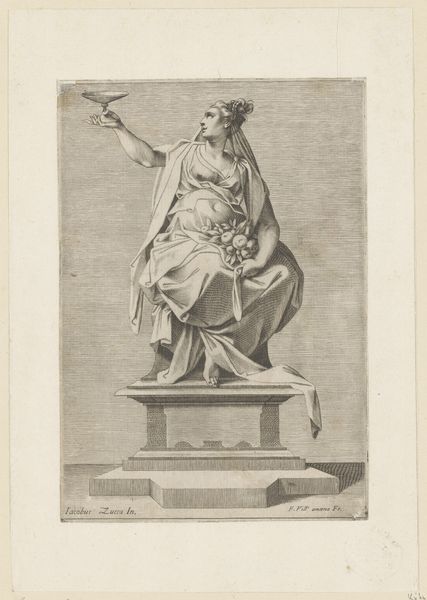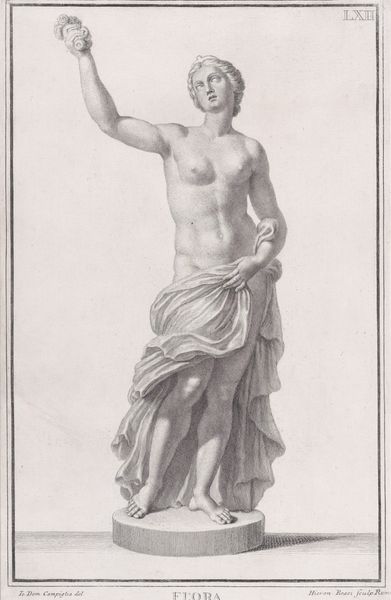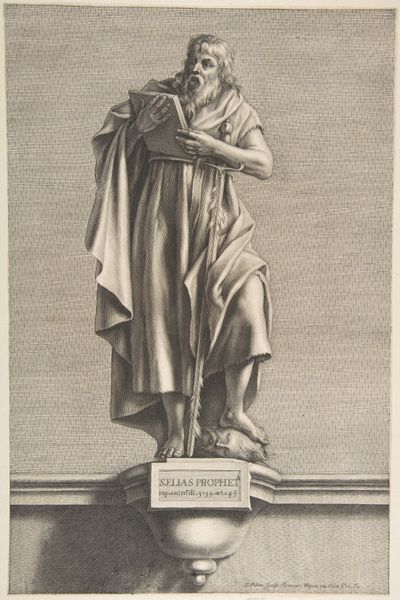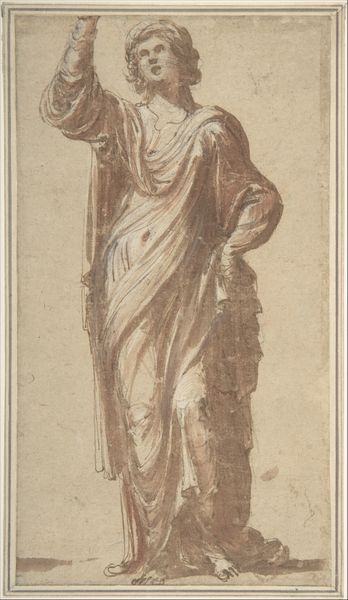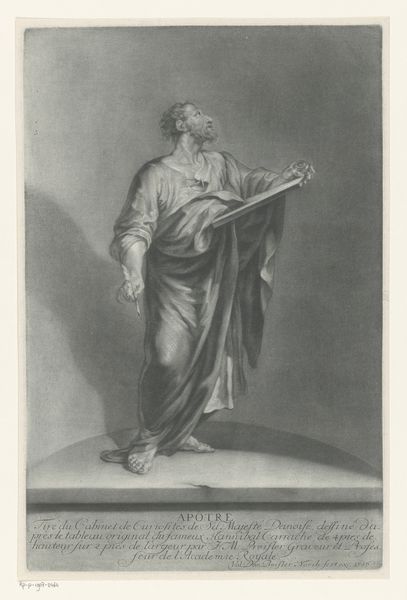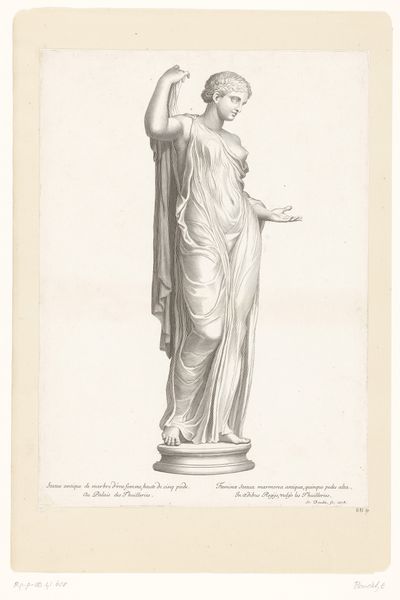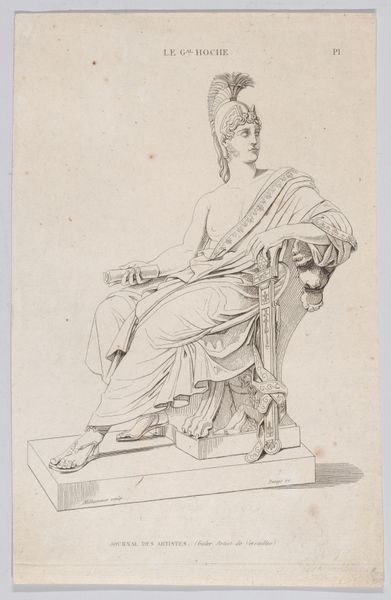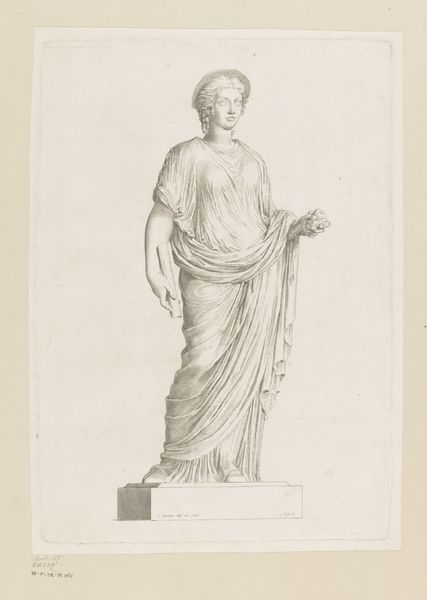
Statue of Tuccia, the ancient Roman Vestal Virgin (Tucia Vestale) 1743 - 1753
0:00
0:00
Dimensions: Sheet (Trimmed): 15 3/4 × 8 15/16 in. (40 × 22.7 cm)
Copyright: Public Domain
This print of Tuccia, the ancient Roman Vestal Virgin, was made by Francesco Monaco in the mid-18th century. It’s an engraving, meaning that the image was incised into a metal plate, likely copper. Ink was then applied and the excess wiped away, leaving ink only in the incised lines. Finally, paper was pressed against the plate to transfer the image. Look closely, and you can see how the artist used various tools to create different effects. Fine, closely spaced lines create the illusion of shadow, while broader strokes define the contours of Tuccia's draped figure. The controlled, repetitive labor required to create an engraving like this speaks to the value placed on precision and skill in the 18th century. The print served as a means of disseminating classical ideals and artistic styles, making them accessible to a wider audience. By understanding the labor-intensive processes involved, we can better appreciate the social and cultural significance of this print.
Comments
No comments
Be the first to comment and join the conversation on the ultimate creative platform.
